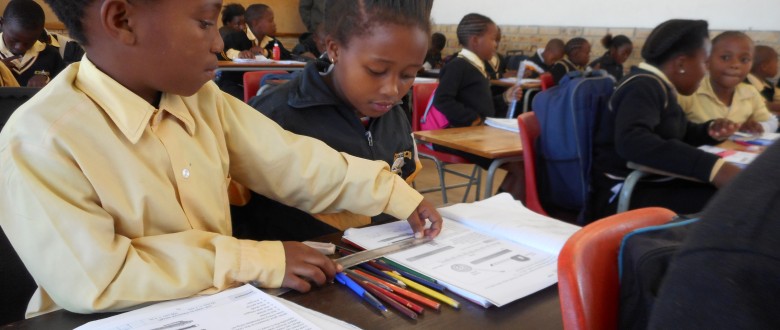
VVOB’s programme Learning and Teaching for Diversity (2017-2021) in South Africa got off to a flying start in Free State Province. Nearly 150 government officials of the provincial Department of Education came together in a learning trajectory on how to ensure inclusive education for all pupils. The critical factor for this successful peer learning process? Breaking down the barriers between different fields of educational expertise.
Making the cut
For a long time, inclusive education was associated with learners who needed special care, a concept limited to the medical sphere. But since the definition of the Sustainable Development Goals (SDGs) in 2015, inclusive education has taken up a more prominent role as indispensable to quality education in general.
True to the SDGs and committed to quality education, the Department of Education in South Africa created a new section ‘Inclusive Education’, adding another pillar to its organisation and strengthening the existing sections of Curriculum, Management & Governance and Teacher Development.
But the mere creation of a new section at government level just doesn’t cut it for real inclusivity, as long as learners in the classroom are negatively affected by teaching practices that unintentionally fail to take into account learner diversity.
Prevention matters
In other words, the government’s good intentions towards inclusive education need to find their way to the place it matters most: the diverse classroom. That’s why VVOB South Africa targets those officials in the Department of Education responsible for the continued professional development of teachers and school leaders.
At the beginning of this long-term process, VVOB questioned officials from the Curriculum section in the Free State Province about their working relationship with their colleagues from Inclusive Education in early 2017.
This study revealed only 8 per cent of specialists from Curriculum worked actively together with their peers from Inclusive Education. Another interesting statistic: more than half of the Curriculum specialists only referred extreme cases of learners with difficulties to their counterparts at Inclusive Education.
But what about the 80 to 95 per cent of learners who are not referred, but could nevertheless benefit tremendously from an inclusive pedagogy from a prevention point of view?
Streamlining support
As part of VVOB’s 2017-2021 programme in South Africa, funded by Belgium and appropriately named Learning and Teaching for Diversity, VVOB brought together 51 officials from the Inclusive Education section and 90 officials from the Curriculum of the Free State Department of Education.
These pivotal actors in South Africa’s education system embarked on a learning trajectory that revolved around effective inclusive education. The ultimate purpose was to streamline and strengthen the support these officials with different profiles offer to schools.
A bonus was the strengthened appreciation towards the newly created Inclusive Education section, its mission and employees.
VVOB South Africa developed a self-reflection tool for inclusive pedagogy that framed discussions about inclusive education. In practice, this tool is a prototype of an inclusive educator, and can be used by the officials to interact with teachers and school leaders struggling with inclusive teaching practices.
Long-term learning
By bringing together education specialists from different sections, participants learnt with and from each other. A curriculum expert might lack specialised pedagogical skills to reach vulnerable learners, while an inclusive education expert might need some extra pedagogical content knowledge. Group them together, and you get an invaluable expert team that can jointly reach many more schools in the vast country.
A recurring remark was indeed that, if officials from different sections joined forces, the impact of their work would increase and teachers would be less confused about the different approaches. This might seem evident to some, but in the South African reality, hierarchical and bureaucratical structures are quite often a hurdle.
Other than peer learning, the long-term approach of organising a learning trajectory, rather than a one-off training or workshop, has been proven more sustainable. VVOB brought education specialists together over a period of one year to work on a specific case of a teacher, school leader or school that required support on inclusive practices.
Way forward
But the road to good inclusive practices does not end here. In 2018, the cross-sectional collaboration will grow with officials from the Management & Governance section, who are responsible for supporting school leadership. It’s school leaders who are responsible to oversee school environments are conducive for inclusive teaching practices, so their knowledge of and support for inclusive pedagogies are crucial.
VVOB will also launch the learning trajectory on inclusive education in Kwa-Zulu Natal province, upgraded with the lessons learnt in Free State. Hopefully, the results will be equally positive.




